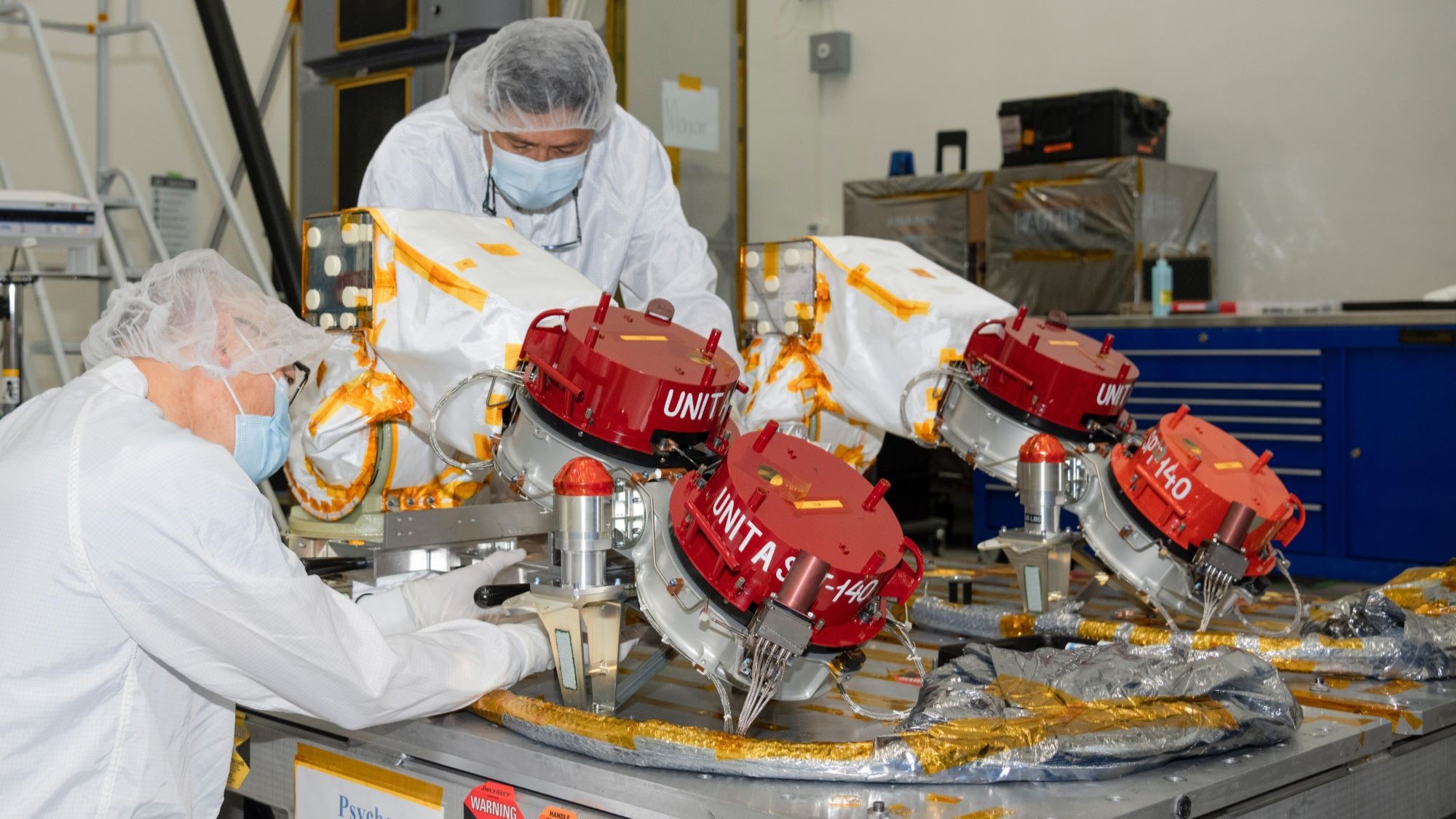

Last Friday, NASA launched the Psyche spacecraft toward an asteroid of the same name. Psyche is blazing a trail as the first mission to a metal asteroid, and it’s also about to blaze a literal blue trail. The source of its bright wake—the probe’s remarkable propulsive system—will switch on within the first 100 days of the mission.
A mechanism known as a Hall thruster will propel the Psyche through space. This thruster glows blue as it ionizes xenon, a noble gas also used in headlights and plasma televisions, to move the spacecraft forward. This is the first time this tech, which has only been available for NASA spaceflight since 2015, has been used to travel beyond the moon—but what makes it so special, and why is Psyche using it?
When planning a space mission, engineers are focused on efficiency. Carrying chemical fuel along for the massive interplanetary journey would be like trying to drive around the entire world while having to keep all the gasoline you need in the trunk, because there are no rest stops along the way—it’s just not feasible. To get to its destination, Psyche would need thousands and thousands of pounds of chemical propellant.
[Related: How tiny spacecraft could ‘sail’ to Mars surprisingly quickly]
To get around this problem, engineers turned to electric thrusters. These come in many flavors: “There are many different types of electric thrusters, almost as many as there are different makers of cars,” explained NASA’s Psyche chief engineer Dan Goebel in a blog post. But space travel uses two kinds in particular, known as ion thrusters and Hall thrusters. “They can probably be considered the Tesla versions of space propulsion,” Goebel wrote. Rather than burning fuel, electric thrusters rip off the electrons from the propellant’s atoms in a process known as ionization. Then they chuck those ions out at some 80,000 miles per hour. This generates a higher specific impulse—which Goebel says is “equivalent to miles per gallon in your car,” but for spacecraft—than chemical fuels, enabling a thruster-powered spacecraft to go farther on less propellant.

Ion thrusters use high electric voltages to make a plasma (the fourth state of matter) and spew ions into space. NASA’s Dawn mission used these to get to dwarf planet Ceres, but they’re not the fastest—according to NASA, it would take the spacecraft four days to go from 0 to 60 miles per hour. Definitely not race car material!
[Related: Want to learn about something in space? Crash into it.]
Hall thrusters, on the other hand, use a magnetic field to swirl electrons in a circle, producing a beam of ions. They don’t get quite as good “mileage” as ion thrusters, but they pack a bigger punch. The Psyche team picked this system because it allowed them to make a smaller, and therefore more cost-efficient, spacecraft.
For the thrusters to work, the spacecraft needs power—which it gets from the sun, via solar panels—and something to ionize. For Psyche, that’s xenon gas. “Xenon is the propellant of choice because it’s inert (it doesn’t react with the rest of the spacecraft) and is easy to ionize,” explained Goebel. It also gives the thrusters their remarkable blue shine. Psyche carries about 150 gallons of the stuff, and gets about 10 million miles per gallon.
Now that the mission has launched, the team will spend the next 100 days checking out all the spacecraft’s systems to ensure they’re ready for the journey. At some point in this period, those glimmering blue thrusters will turn on.
If Psyche proves to be a success, Hall thrusters will be likely to make an appearance on future space missions. They offer “the right mix of cost savings, efficiency, and power, and could play an important role in supporting future science missions to Mars and beyond,” said Steven Scott, program manager for the Psyche mission at the company Maxar, which built the thrusters, in a press release. Thanks to these propulsive devices, Psyche should reach its destination in the asteroid belt in just 3.5 years—and we can’t wait to see what lies at the end of its electric blue trail.
